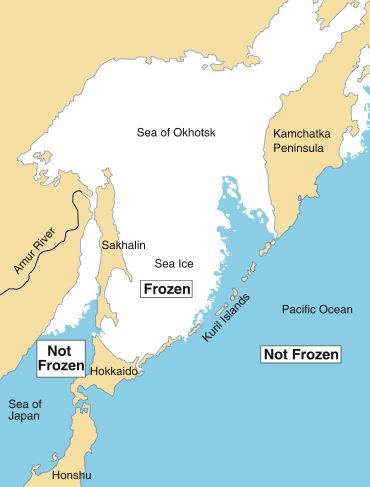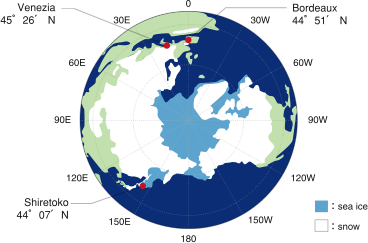|
 |
 |
Shiretoko forms the dynamic food chain based on vast amount of plankton brought by sea ice, and links ecosystems of seas, rivers and forests. The Sea of Okhotsk is located at the lowest latitude in the world where seasonal sea ice forms. This is due to three unique conditions affecting the Sea of Okhotsk: the doubled-layer water structure having different levels of salinity; being sheltered by a surrounding land mass, thus affording little exchange of seawater with the open sea; and weather patterns whereby cold air from Siberia effectively chills the seawater.
A formation of sea ice increases convective activity of seawater, circulating nutrients from the bottom to the surface of the sea. The layer of seawater just under the ice is a perfect habitat for phytoplankton, since there are desirable level of sunlight and temperature. The phytoplankton multiply rapidly once the ice begins to melt, and these activities occur earlier in the waters around Shiretoko Peninsula than anywhere else in the Sea of Okhotsk. Phytoplankton provide food for zooplankton and support a food chain that extends to higher level consumers such as large fish, marine mammals, and terrestrial wildlife.



The latitude of Shiretoko Peninsula (latitude of 44° 07´ N) is lower than that of the famous wine region of Bordeaux, France (latitude of 44° 51´ N) and the canal-filled city of Venice, Italy (latitude of 45° 26´ N) |
 |
|
|